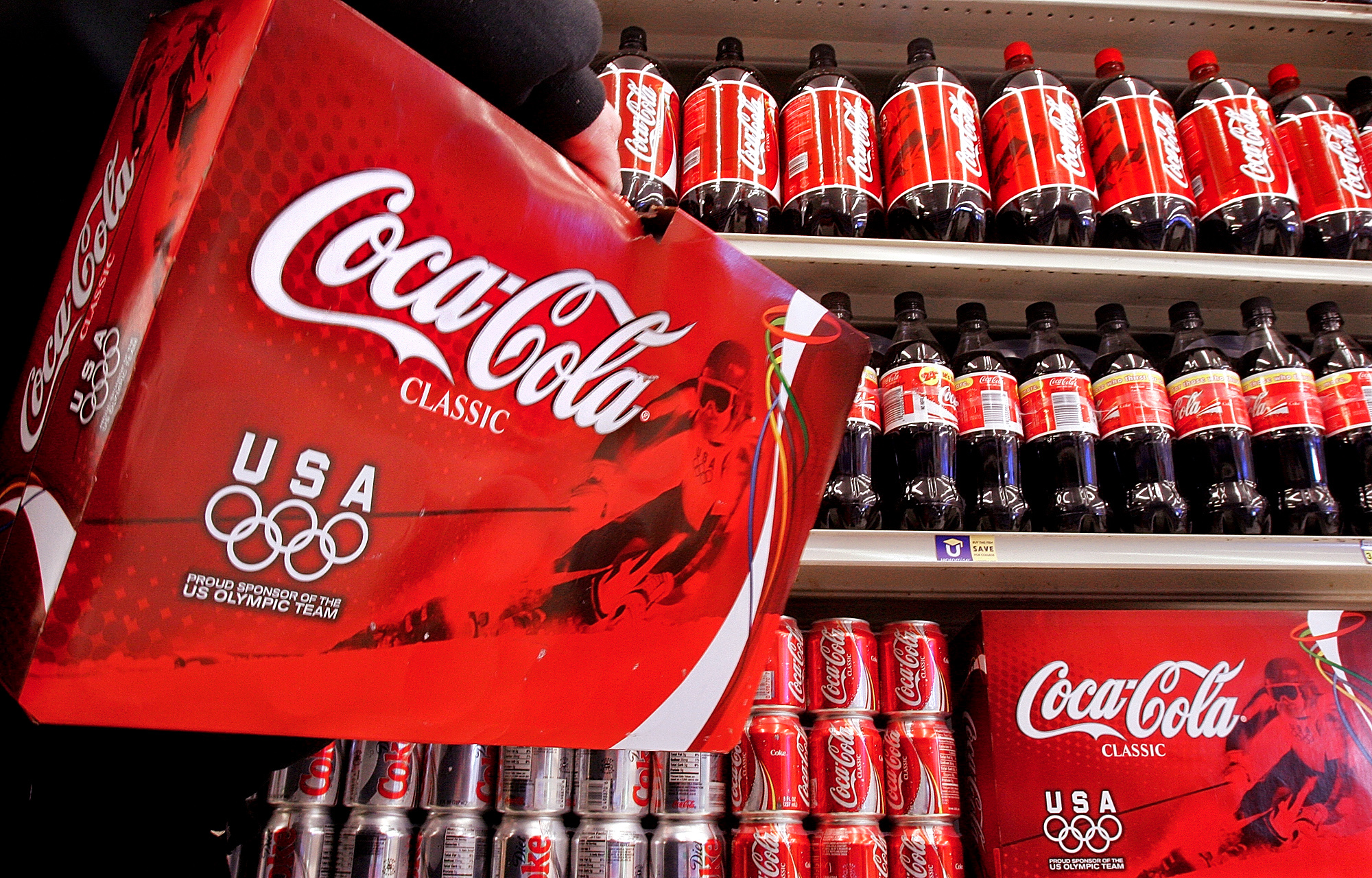The Coca-Cola Co. is selling more of its sodas, sports drinks and bottled waters in most parts of the world, with growth particularly strong in emerging markets.
The world's biggest beverage maker - which makes Minute Maid, Powerade and Dasani - said Tuesday that its sales volume rose 4 percent globally in the second quarter. Revenue growth was powered by higher prices and expansion in countries such as India, where volumes rose 20 percent.
Still, the company's second-quarter profit slipped as costs for ingredients rose as well. The Atlanta-based company was also up against a tough comparison, as the previous year's results were boosted by a one-time net gain related to the merger of two of the company's bottlers.
In its flagship North America market, Coca-Cola said sales volume rose 1 percent, while a mix of higher prices and smaller bottles and cans lifted revenue by 5 percent.
Volume for its sparkling beverages - or sodas such as Coke and Sprite - fell 2 percent.
Growth at home has been difficult at a time when consumers are losing their taste for sugary sodas and have a variety of alternatives, such as sports drinks and bottled teas.
Coca-Cola CEO Muhtar Kent said he thinks the soda business in the U.S. can nevertheless grow once the company eases its pricing.
"Don't forget that we're cycling in epic headwinds in commodity costs," Kent said.
As for Mayor Michael Bloomberg's recent proposal to ban the sale of supersized sugary drinks in New York City, Kent did not say whether he thinks the broader sentiment targeting colas for obesity will impact the business over the long-term in North America. But he said that singling out sodas for blame doesn't make sense.
"There are better ways to address concerns about obesity," he said.
Still, Coca-Cola is looking beyond its fizzy sodas for growth. Sales volume for its still beverages, such as Powerade and zero-calorie Vitamiwater, rose 8 percent in the quarter. Juice brands rose 3 percent, driven by lower-calorie Minute Maid offerings.
In Europe, Coca-Cola said volume fell 4 percent. The company blamed economic uncertainty and bad weather in several regions for the drop.
Given the challenges in developed markets, Coca-Cola is increasingly pinning its fortunes on emerging markets where the ranks of middle-class consumers are multiplying at a rapid clip.
In the U.S., for example, Coca-Cola estimates that the per capita consumption of its drinks on average is more than one 8-ounce serving per day. By contrast, consumers in India drink an average of just 12 servings over the span of an entire year.
As a result, Coca-Cola is racing to establish an early dominance in foreign markets that could help determine its growth trajectory in the years to come. Last month, the company said it would accelerate its investment in India to $5 billion over the next eight years. That's more than double the $2 billion it invested since re-entering the country in 1993.
When taking into account all the drinks it offers locally, Coca-Cola now has a stable of more than 500 drinks.
Looking forward, Coca-Cola now expects full-year costs for ingredients to be closer to $300 million, down from the $350-$450 million it previously forecast.
But the company also warned that unfavorable foreign exchange rates could hurt operating income in the current third quarter.
For the three months ended June 29, Coca-Cola said it earned $2.79 billion, or $1.21 per share. That's down from $2.8 billion, or $1.20 per share, in the year-ago period, when there were more outstanding shares.
Not including one-time items, the company said it earned $1.22 per share, beating Wall Street expectations of $1.19 per share.
Revenue rose 3 percent to $13.09 billion, which also topped analysts' average expectations of $12.89 billion, according to FactSet.
Shares of Coca-Cola rose 42 cents to $76.90 in late morning trading after rising as high as $78.66 earlier in the session. That approached the high end of their 52-week range of $63.34 to $79.36.
Earlier this month, Coca-Cola shareholders approved a 2-for-1 stock split, the company's first in 16 years.

